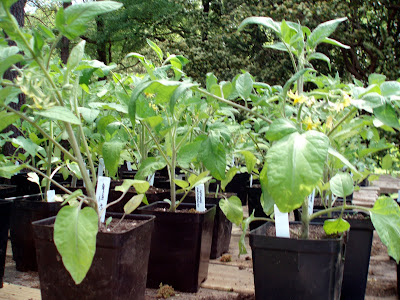
On Saturday April 17, 2010 a group of students went to the garden to double-dig more beds and have a potluck after. Double-digging helps loosen the soil and provide structure. Many of the students were in the group Students for Sustainability but there were also students who came out from hearing about the event. We all worked together to start double digging beds in the area of the garden where there were not any. It was hard work because the ground was so solid and hard to turn. We tried to wet the soil to loosen it up, but even that did was not helpful enough for one bed. We had to use many instruments to double-dig and by the end we had made a more than a few new beds.

The process for double-digging can be tricky and hard to follow. To start the double digging, we would try and remove the weeds growing in the area we wanted the bed to be. Once we removed the weeds, we measured about a foot wide of the bed and removed the soil and put it in the wheelbarrow. Then we would dig beside that first foot, which was empty, and put the soil we were digging, in the first area we dug. We turned the soil and added compost to it. Then we would dig beside the area we had just dug and put that soil in the previous, empty area and turn the soil and put compost in. We did this until the entire bed had been completely dug up and formed.
In these new beds, we are planning on putting in more tomatoes, herbs, watermelons, and flowers.
Afterwards we all enjoyed delicious food like home-made hummus Nicole Ortega made, guacamole with half-cherry tomatoes made by Matthew Bush, a pasta dish from Camille Perret, and chips and drinks. It was a very hot afternoon, but having a group to wo
 rk together really helped get more accomplished.
rk together really helped get more accomplished.With this event we also found more students who wanted to be involved with the garden and join Students for Sustainability. Some of the new students did not know how to even get to the Arboretum and had never heard of Students for Sustainability. Having events like this, opens the door of opportunity for students to find out and get involved in the garden which is why it is important to have these events.
 This is the bed that was the hardest to dig up because the soil was so clay-like. Even the addition of water did not help to loosen it up.
This is the bed that was the hardest to dig up because the soil was so clay-like. Even the addition of water did not help to loosen it up.
















































